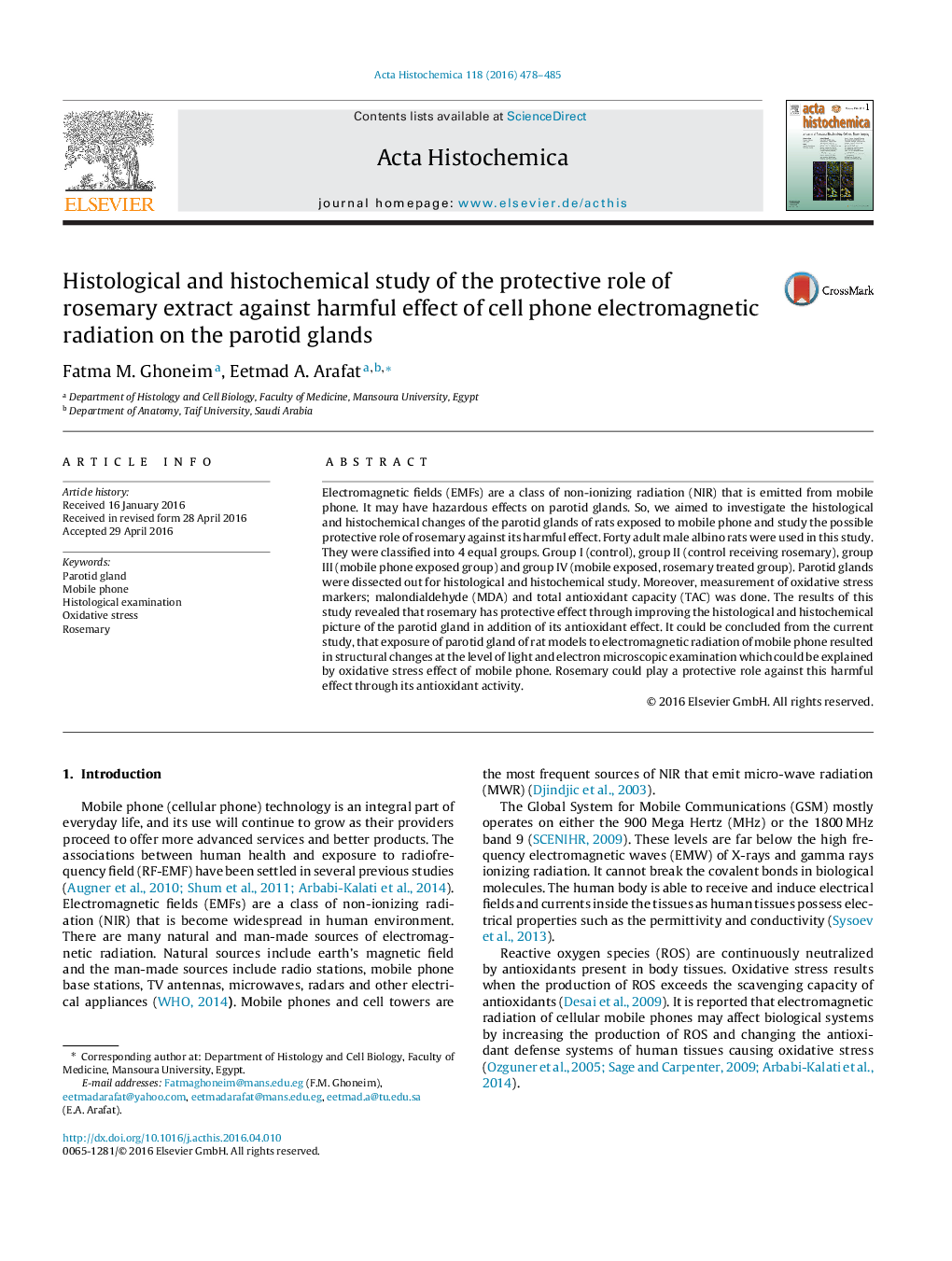| کد مقاله | کد نشریه | سال انتشار | مقاله انگلیسی | نسخه تمام متن |
|---|---|---|---|---|
| 1923342 | 1048886 | 2016 | 8 صفحه PDF | دانلود رایگان |
Electromagnetic fields (EMFs) are a class of non-ionizing radiation (NIR) that is emitted from mobile phone. It may have hazardous effects on parotid glands. So, we aimed to investigate the histological and histochemical changes of the parotid glands of rats exposed to mobile phone and study the possible protective role of rosemary against its harmful effect. Forty adult male albino rats were used in this study. They were classified into 4 equal groups. Group I (control), group II (control receiving rosemary), group III (mobile phone exposed group) and group IV (mobile exposed, rosemary treated group). Parotid glands were dissected out for histological and histochemical study. Moreover, measurement of oxidative stress markers; malondialdehyde (MDA) and total antioxidant capacity (TAC) was done. The results of this study revealed that rosemary has protective effect through improving the histological and histochemical picture of the parotid gland in addition of its antioxidant effect. It could be concluded from the current study, that exposure of parotid gland of rat models to electromagnetic radiation of mobile phone resulted in structural changes at the level of light and electron microscopic examination which could be explained by oxidative stress effect of mobile phone. Rosemary could play a protective role against this harmful effect through its antioxidant activity.
Journal: Acta Histochemica - Volume 118, Issue 5, June 2016, Pages 478–485
